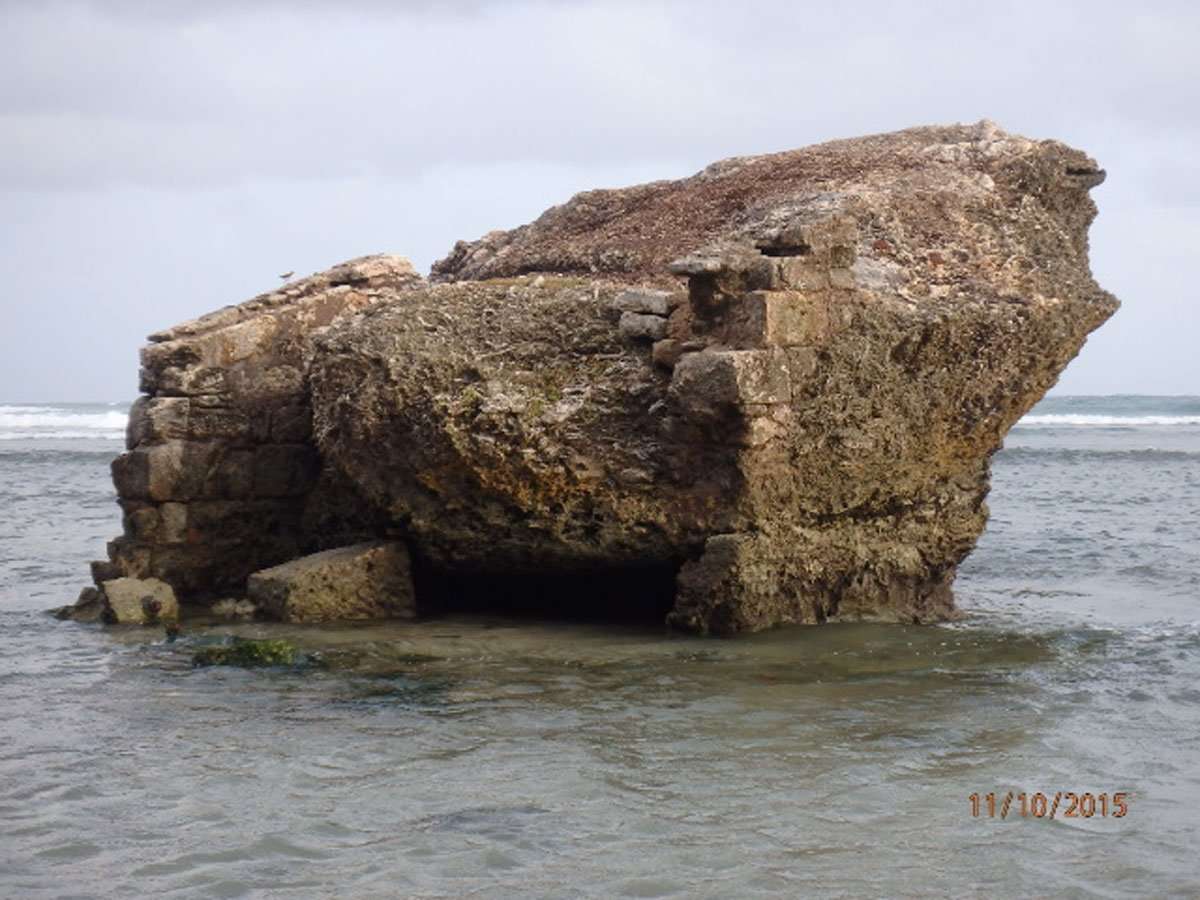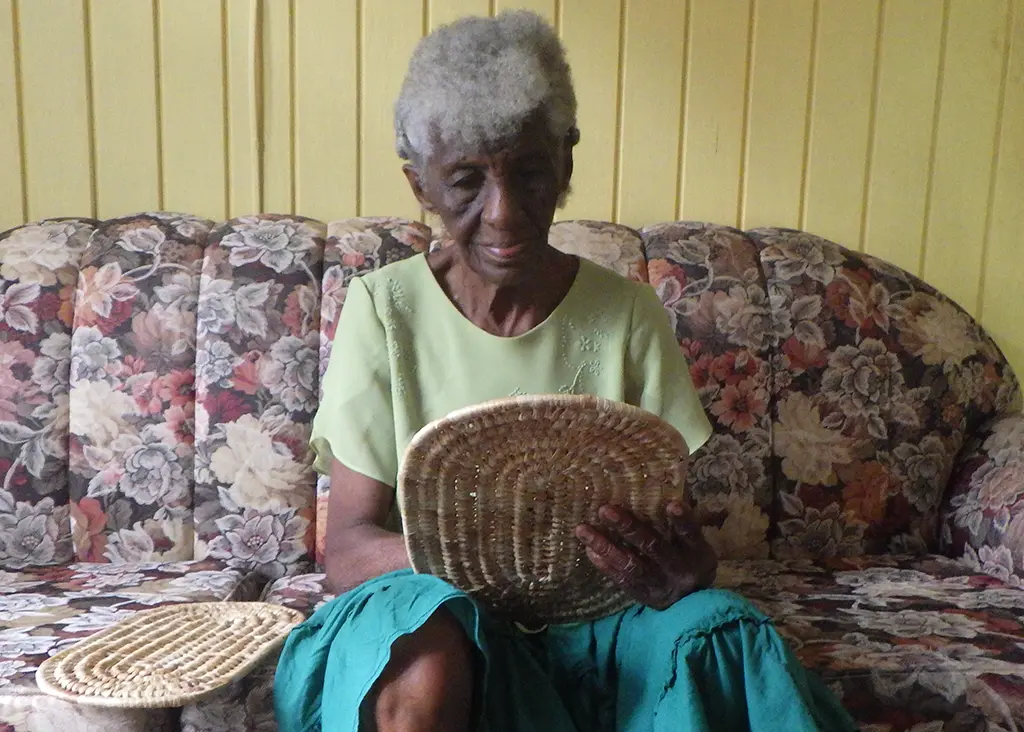Before the introduction of refrigeration, keeping meat fresh was a problem. One option was to dry and and salt the meat and stored in a cool and dry place. For those who lived on the coast, salt water fish pools / fish ponds were often used. When a lot of fish was caught the excess would be placed in the enclosure and kept for times when fishing was poor. This gave the fishermen and their families a ready supply of fresh fish.
I know of three such salt water pool enclosures along the east coast of Barbados.
Bath Fish Pool

Quamins Rock is a few meters from the beach. Mr. Quamins was one of the engineers who worked on the train track in the area. He lived in a house close to this rock and to the North of the road, called Pa Hill, which goes up to the defunct Bath Factory and Earth Station.

The bridge crossing the river adjacent to Pa Hill is also called Quaminss Bridge. This is one of the last original train bridges that is still used.
Mr. Quamins built an enclosure from the rock to the shore. This used the rock as one side and the other were made of limestone blocks.
Any excess catch was put into the pool. It could have been mixture of Lobster, Turtle, Sea Cat, Sea Egg and larger fish. Seawater was able to circulate keeping all healthy until someone was ready for a meal. This has not been used in my lifetime. Some of the Limestone blocks are still visible.
Recently I met Mr Watson and his wife who were born in the area and have returned from the UK, where they lived for 55 years. He confirmed that the enclosure was used for fish. Both he and his wife called the pool “The Store House”.
One of the “Rites of Passage” for young children of the 50’s and 60’s was to climb to the top of Quamins Rock and jump into the pool. This rock is now called Mother Frog.
Thanks to David Marshall for this information.
Sam Lords Fish / Turtle Pool

At Sam Lords Castle is a much larger version of the same idea. It is located between the two beaches just to the North of the walkway that divides them. Here a more substantial enclosure was made. This is about 15 Meters in Diameter and surrounded by a limestone wall.
In this case the seawater enters the pool through a small cave in the cliff.
With both of these pools fresh sea water was able to enter the enclosure. This kept the fish healthy and they would have had the moss and small sea life to eat.
I remember going there in the 1960’s and seeing turtles and fish in it. The water was constantly moving as the waves pounded on the other side of the cliff. This supplied the kitchen at Sam Lords Hotel with fresh fish. It was also a mini aquarium for the guests. Maybe it was used as far back as Sam Lord. I think it had a resident turtle up to the middle 70’s
Over the years it has filled with sand. All that is required is to have the sand removed and the sea water will fill the pool. If you scramble through the grape trees close to the cliff you can still hear the seawater surging into the cave.
I hope that when the hotel is finally redeveloped this natural feature could be used, but not as a turtle cage.
Foul Bay Fish Pool?


Recently while exploring the bottom of the cliff face on Foul Bay Beach I came across a circular limestone structure. Initially I thought it was a well.
I suspect that this was another of these storage ponds for fresh fish. I have asked several people about this and no one knows its true purpose. Richard Goddard thinks it could be a shallow well used to collect water that would have seeped out of the base of the cliff. Similar wells were located around the Goddards Complex in Fontabelle.
If anyone has any other ideas let me know.
I am sure that there are many other examples around the island. I would like to know about and record them for future generations. To contact me either post a message at the bottom of the page or click on the Contact Burts link in the header to email me.







Leave a Reply